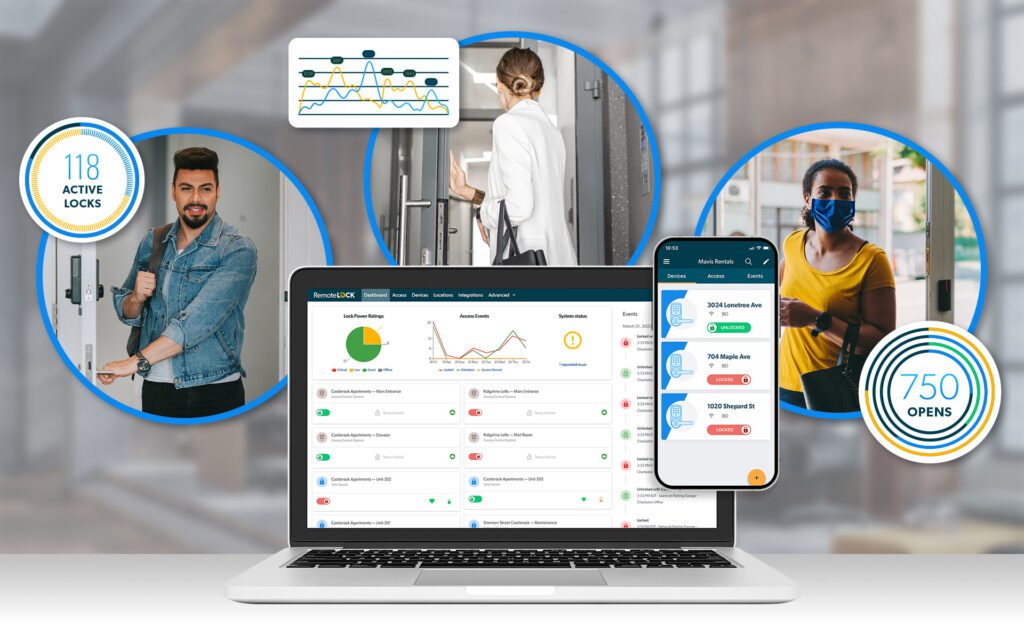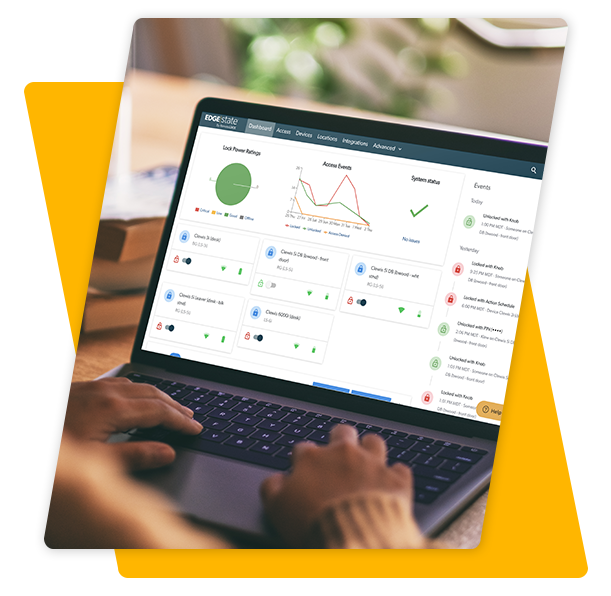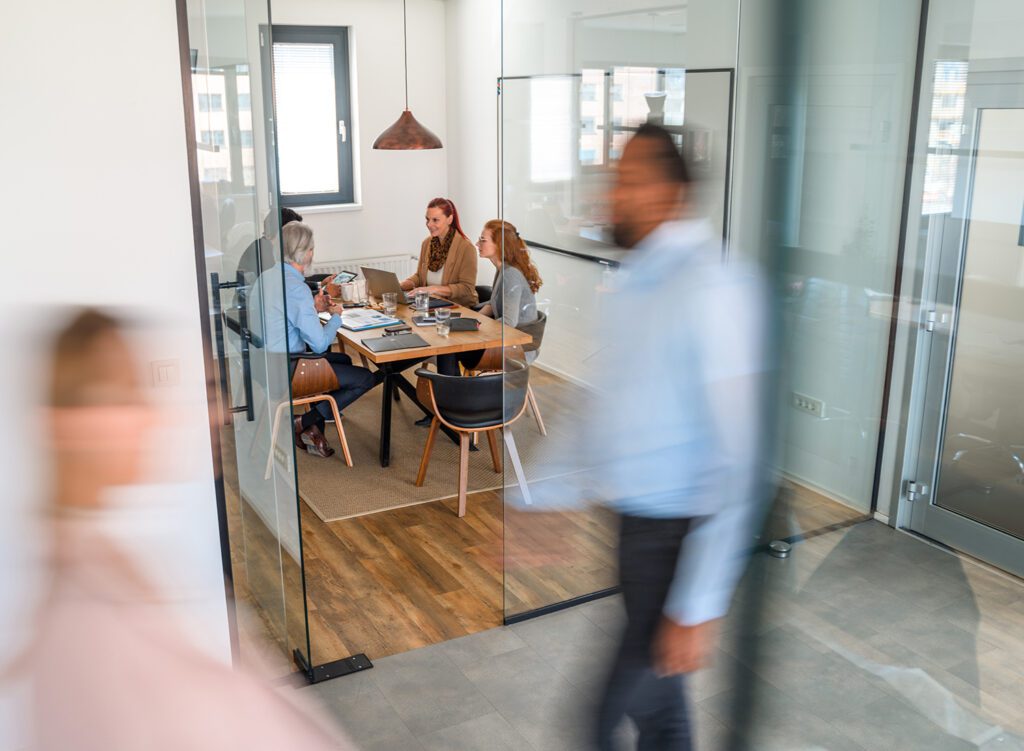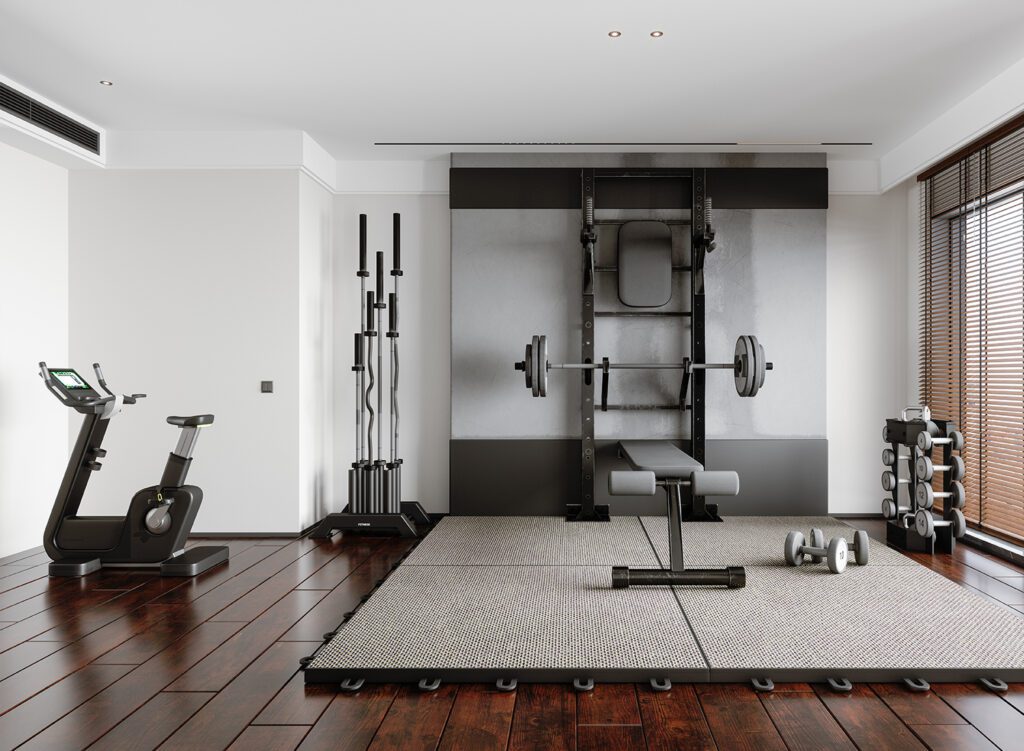Reaping the Rewards of Access-Control Data
Nearly everything businesses do today generates data, mountains of it. Accounting professionals are constantly reviewing invoices, purchase orders and delivery receipts to accurately budget and forecast. Marketing departments dive into conversion rates, content engagement and re-posts. Multifamily and commercial building operators are reviewing historical occupancy trends to strategize for new growth. There’s data everywhere, and, when organized purposefully, it can provide valuable insights.

This is especially true of a modern access control system. In the nascent stages of this technology, building owners viewed access control as a basic function and often opted for the cheapest solution that would last the longest without much maintenance. Today, the expectation is that your access control solution will not only help secure spaces, but also provide much-needed data about your spaces and how people use them.
With cloud-based access control software from RemoteLock and doors either enabled with hardwired access control or smart locks, multifamily and commercial building operators enjoy the convenience of remotely managing access from anywhere. This comprehensive system also generates helpful data that users can easily access through reporting functions with just a few clicks.

- Access User Report: a list of users/guests who are active, upcoming, deactivated or expired
- Event Reporting: access event with a timestamp, door at which event occurred, type of event and method of entry
- Device Report: battery power level, network status and serial number—all useful data for maintenance when troubleshooting devices
- Admin Log: More in-depth report of events history and show details like who the administrator was and the action he/she performed
A filter function can be used on any of the above reports, allowing you to narrow the data to a certain location, date, time or user. Plus, all of these reports can be quickly exported to a CSV file (tabulated in plain text), so you can organize, save and share the data with others who may not have access to the platform.
Amenity Use
Now that you have all this access data, how can you use it? For multifamily property managers, access control data offers insights into the use of amenities and informs decisions around whether to eliminate them, improve them or even charge fees for them. For example, you could determine how many people are going into the fitness room, when they’re using it and how many are there at any one time.

People Flow
With more businesses allowing more remote work, commercial spaces need to better accommodate hybrid workforces. Cloud-based access control is quickly becoming the standard for office and commercial spaces striving for safe, hybrid-ready spaces in the post-COVID-19 era. By improving the management of your “people flow” throughout your building, you gain better situational awareness and overall security.
Data from the system answers questions like: How should employees be situated in commercial spaces? Does engineering demand more space than finance because more of their staff routinely comes to the office? Which entrance is used the most frequently? What can we expect in occupancy rates in the next six months?

Today’s environment also demands you effectively manage the total number of people in a given space. For commercial buildings, a cloud-based access control system and its data are foundational tools for giving employees specific days in the office, as well as the work stations and meeting rooms they need. In the past, access control was mostly deployed at the main entrance of multifamily or commercial buildings. Now, with helpful integrations, you can use it to reserve spaces, including common spaces and individual offices.
People Flow and Contact Tracing
Access control data has never been more useful in maintaining social distance, limiting occupancy, and knowing who may have been exposed to highly contagious viruses. With an advanced access control system like RemoteLock, you can quickly run audits on space usage to determine who was where and when.
Energy Savings
According to the Energy Information Administration, a subdivision of the U.S. Department of Energy, the average energy consumption of a commercial building is 22.5 kilowatt hours per square foot, making it one of the top operating expenses.

Knowing when and where employees, tenants and guests historically use certain spaces allows commercial building operators to turn down heating and cooling or certain lighting to save on energy costs.
In multifamily buildings, access control data can also help determine when to lower heating, cooling and/or lighting in common spaces. This strategy, along with opting for energy-saving features like high-efficiency HVAC systems or water-saving showerheads, can be important steps in meeting your sustainability goals, which has grown increasingly important to Gen X and Y renters.
Dive Into Data & More with RemoteLock
In today’s world, property managers and owners have to maintain the security, flexibility and efficiency of all their spaces, which can be a tall order. A universal access control system that supports every door — both those enabled by smart locks and hardwired ones — is imperative to deliver on all these fronts. With RemoteLock, you enjoy one central point of command to both manage spaces, and track and mine valuable access data that’s needed to make significant business decisions.
Talk with a RemoteLock access control expert today, and start harnessing access data for improved business operations and decision-making.

RemoteLock
Automated Access Control and More
RemoteLock has been automating access control and improving on-site property operations efficiencies across multiple industries, including vacation rental and multifamily, for more than ten years. As a leading access-centered property operations software platform provider with more than 10,000 customers in 75+ countries, RemoteLock helps property managers enable, control, and automate access and climate control across their portfolio. RemoteLock’s platform saves property managers time and money through the elimination of tasks for onsite staff and helps scale businesses with greater confidence. It is differentiated by its dozens of integrations with applicable hardware and business software systems for an easy-to-use, turn-key solution.
